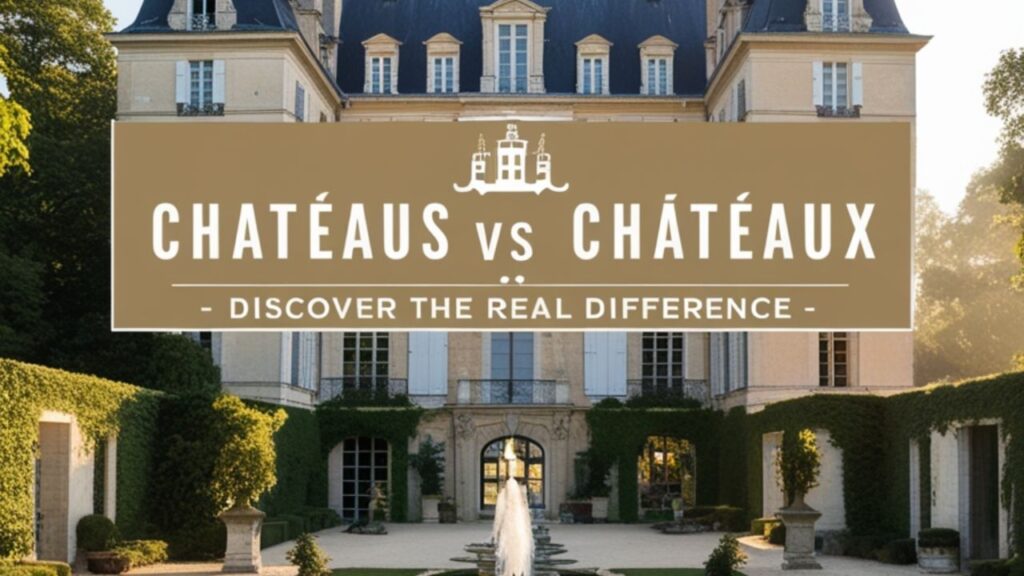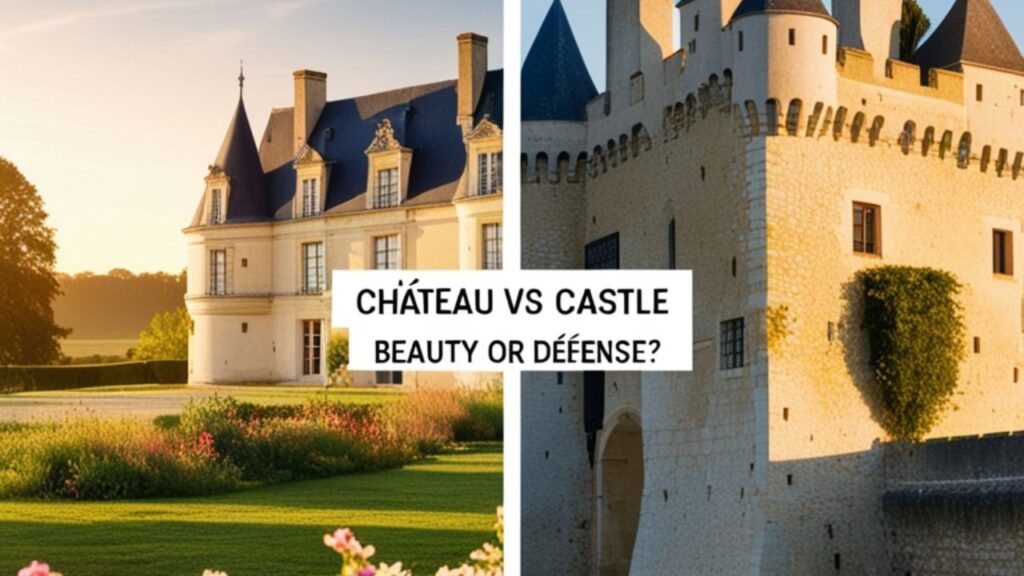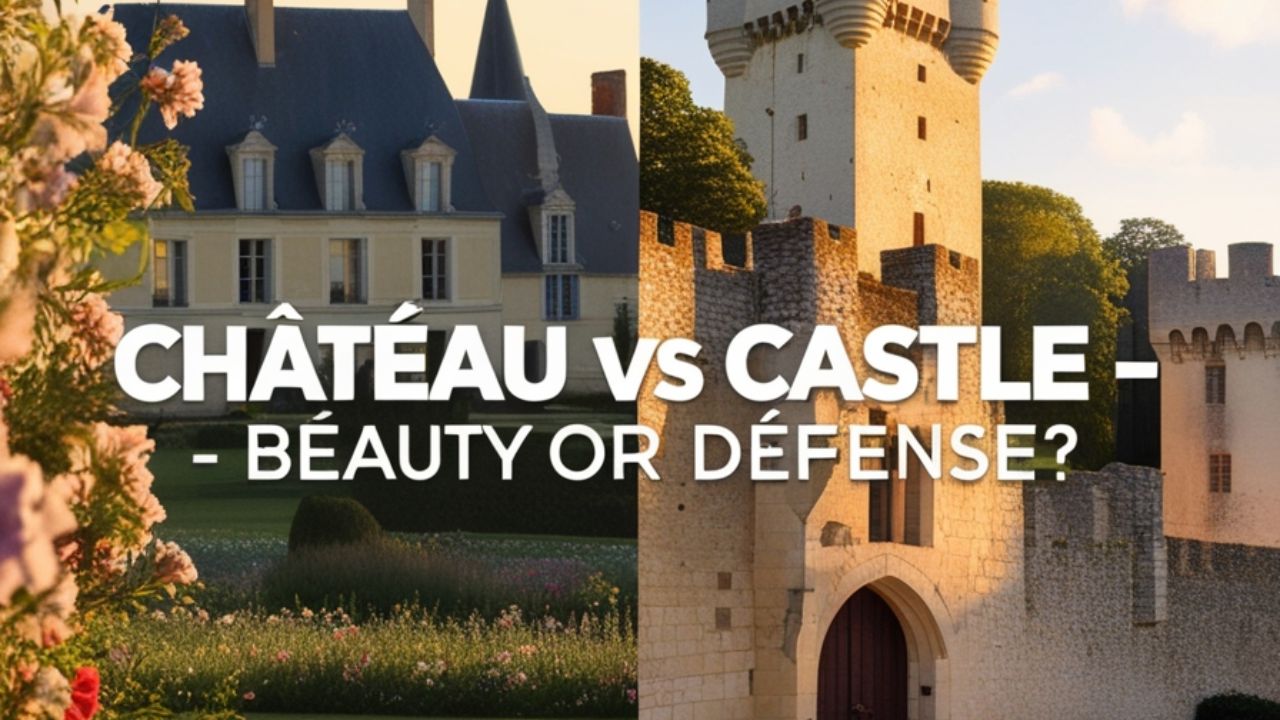A château is a big and beautiful house found mostly in France. It looks grand like a castle but feels warm and welcoming. Many have tall towers, wide gardens, and pretty rooms where kings or rich families once lived. These places show history and charm.
In English, people often write chateaus instead of the French châteaux. Both mean the same, but the second one keeps its French spelling. Writers use chateaus for simple English and châteaux when they want to sound fancy or talk about French culture.
Today, the word château can mean a lovely hotel, a wine estate, or a fancy home. Many countries now build places with the same style. These homes remind everyone of French art, design, and the beauty that never fades with time.
Plural Forms: Chateaus vs Châteaux
In English, people use chateaus to talk about more than one big house or castle. It follows the simple English rule of adding “s” at the end. This spelling is easy for young learners to read and write in daily use.
The French form châteaux keeps its special accent marks. It looks elegant and shows respect for French culture. Writers and teachers use this version in books or lessons about France. Both words mean grand homes filled with beauty and history.
| Form | Context | Example Sentence |
| Chateaus | Casual English writing | “We visited three chateaus last summer.” |
| Châteaux | Formal/French-infused contexts | “The châteaux of the Loire attract millions of visitors.” |
- Chateaus is the English way to show more than one château.
- Châteaux is the French way and keeps the special accent marks.
- Both words mean big, grand houses that look like castles.
- Writers use chateaus in normal English and châteaux in formal writing.
- The meaning stays the same; only the spelling and style are different.
French vs English: Cultural and Linguistic Differences
The French language keeps words like châteaux full of style and beauty. It shows pride in culture and history. Every accent and letter has meaning. People in France use these forms to keep their language rich and true to its roots.
In English, words like chateaus become simpler and easier to spell. This helps readers learn quickly and use them in normal writing. English takes ideas from French but changes them slightly to fit its own clear and friendly sound.
- The French word châteaux keeps its accents and shows cultural pride.
- In English, chateaus removes accents to make spelling easier.
- French words sound smooth and artistic, while English words sound clear and simple.
- The French style values beauty and history in every word.
- English changes some French words to fit everyday writing and speech.
See also : Maximal vs Maximum: Key Difference Explained Clearly
The Architecture and Features of a Château
A château is a large and graceful building with tall towers and wide gardens. It often has pretty windows, long halls, and lovely stone walls. Every corner shows beauty and strength, making it look like a dream from old times.
Many châteaux stand near rivers or hills, surrounded by green fields and trees. Inside, there are big rooms, shiny floors, and fine furniture. These homes were made for comfort and pride, showing art and care in every detail.
- A château has tall towers, large windows, and strong stone walls.
- Beautiful gardens and fountains make the outside look grand and calm.
- Inside, there are wide halls, shiny floors, and fine furniture.
- Many have artwork, long staircases, and large dining rooms.
- Every château shows elegance, balance, and the charm of old French design.
Components and Structure of a Traditional Château

A château has a big main house where people live and meet guests. Around it are smaller buildings for helpers or visitors. There is often a large yard, a small church, and gardens where flowers and fountains make everything look peaceful.
Inside many châteaux, there are dining halls, music rooms, and cozy bedrooms. Some have secret hallways and tall staircases. Cellars hold food or wine, and libraries keep old books. Every part shows care, balance, and beauty in its design.
- A château has a main house where the owners and guests stay.
- Smaller side buildings are used for helpers and visitors.
- There are large courtyards for gatherings and celebrations.
- Many include a small chapel, cellars, and big kitchens.
- Gardens, fountains, and long pathways complete the peaceful design.
Château vs Castle: Are They the Same?
A château is made for beauty, peace, and fine living. It has lovely gardens, bright windows, and soft designs. People built it to enjoy art and comfort. It shows style and pride instead of strength or fighting power.
A castle was built to stay safe during wars. It has thick stone walls, watchtowers, and gates for soldiers. Its look is strong and bold. While both are grand, one is for defense and the other for graceful living.
Quick Comparison
A château is known for its lovely look and peaceful life. It has wide lawns, open rooms, and bright gardens. People lived there to enjoy art and calm surroundings filled with music, food, and family moments.
A castle stands strong with tall towers and heavy gates. It was made to protect people from danger. Soldiers stayed inside during battles. Its hard walls and dark halls show power and safety instead of beauty and comfort.
| Feature | Château | Castle |
| Purpose | Prestige, aesthetics, living | Defense, military stronghold |
| Style | Gardens, symmetry, grandeur | Walls, towers, battlements |
| Era Focus | Renaissance–Modern | Medieval–Early Renaissance |
| Examples | Château de Chambord | Windsor Castle |
Modern Interpretations: What Counts as a Château Today?
A château today can be a fancy hotel, a wine farm, or a big house. It keeps the old charm with tall doors, wide gardens, and shining lights. Many people visit these places to feel the touch of history and art.
Modern châteaux appear in many countries and styles. Some stand near lakes, while others rise on green hills. They bring together old beauty and new comfort. Their graceful look reminds everyone of French class, fine taste, and peaceful living.
- A château today can be a fancy hotel, resort, or winery.
- Many are used for weddings, parties, or holiday stays.
- Modern ones keep old designs but add new comforts.
- Some appear in countries like America, Canada, and Italy.
- They still show elegance, beauty, and a touch of French style.
See also : Same Difference Idiom: Meaning, Examples & Usage
Famous Châteaux Around the World
- Château de Versailles in France is known for its golden halls and gardens.
- Château de Chambord is famous for its tall towers and royal look.
- Château Frontenac in Canada sits high and looks like a fairytale palace.
- Château Margaux in France is loved for its fine wine and classic design.
- Château de Chenonceau crosses a river and shines with beauty and history.
Pronunciation Matters: Saying Château and Châteaux Right
The word château is spoken as “sha-toh.” It sounds smooth and soft. The last part flows gently, just like French words often do. Speaking it this way helps show care for the language and makes the word sound beautiful.
The plural form châteaux sounds the same but means more than one. Both words share the same tone and style. Learning the right way to say them helps people speak clearly and respect the lovely French sound.
- The word château sounds like “sha-toh.”
- The plural châteaux is said the same way.
- The “ch” makes a soft “sh” sound like in “shoe.”
- The end “eau” sounds like “oh,” smooth and gentle.
- Saying it correctly shows respect for the French language.
SEO Power: When to Use “Chateaus” vs “Châteaux” in Content

- Use chateaus when writing for readers who prefer simple English.
- Choose châteaux for travel, culture, or history topics about France.
- Search engines understand both forms, so mix them wisely in articles.
- Chateaus works better for general blogs, while châteaux fits formal writing.
- Using both forms helps your content reach more readers online.
Final Thoughts
A château shows the heart of French art and beauty. It stands for grace, comfort, and fine design. Each one tells a story about old times, kind people, and the care used to build such peaceful and grand homes.
Writers and learners can use both chateaus and châteaux based on their needs. One fits simple English, while the other keeps French charm. Knowing both forms helps people write better and understand the culture behind the word.
FAQs
Est-ce un château ou des châteaux ?
“Un château” est singulier, “des châteaux” est pluriel, utilisé pour parler de plusieurs châteaux.
Quelle est la différence entre un château et un château ?
Aucune différence, les deux mots sont identiques ; seule la quantité change : singulier ou pluriel.
Quels sont les différents types de châteaux ?
Il existe des châteaux forts, châteaux royaux, châteaux de plaisance et châteaux modernes.
Qui possède les châteaux ?
Les châteaux appartiennent à l’État, à des familles nobles ou à des propriétaires privés.

Join Bibcia on a journey to master English grammar. Discover easy lessons, writing tips, and practical examples designed to make learning grammar simple and effective.










